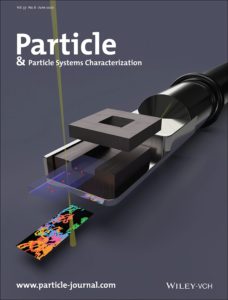Researchers at the Utrecht University and Tohoku University used a Hummingbird Scientific liquid flow TEM holder to study 3-dimensional diffusion of nanoparticles. By using high viscosity liquids and a low electron dose rate, they were able to observe Brownian motion that is not significantly altered by the electron beam.
They present direct experimental evidence of undamped diffusion for two systems: charge-neutral gold nanoparticles in glycerol and negatively charged titania particles in glycerol carbonate. Unlike in previous studies, the resulting diffusion coefficients agree excellently with the theoretical values. Using simulated STEM images using Monte Carlo simulations, they also show that the particles in liquid do not only move in-plane, but also move in the direction of the electron beam. Both experiments and simulations show blurring of the particles when these move out of focus.
Based on these results, they conclude that their results show that direct observation of 3D diffusion of nanoparticles is feasible. The implications of these results are, among other things, that interparticle interactions or in situ colloidal self-assembly can be studied effectively using Liquid TEM under these conditions. They report on their findings in Particle & Particle Systems Characterization.
![]() The motion of titania particles within the liquid TEM holder. a) Schematic of the liquid-cell configuration in the microscope; b) trajectories of the particles (for 100s) shown in the panels in c). c) Stills extracted from an annular dark-field STEM movie showing particle movement with time (frame time 0.5s). Copyright © 2020 The Authors.
The motion of titania particles within the liquid TEM holder. a) Schematic of the liquid-cell configuration in the microscope; b) trajectories of the particles (for 100s) shown in the panels in c). c) Stills extracted from an annular dark-field STEM movie showing particle movement with time (frame time 0.5s). Copyright © 2020 The Authors.
With this work, they also made the cover of the June 2020 issue of Particle & Particle Systems Characterization.

Abstract: Tom A. J. Welling, Sina Sadighikia, Kanako Watanabe, Albert Grau‐Carbonell, Maarten Bransen, Daisuke Nagao, Alfons van Blaaderen, and Marijn A. van Huis, Observation of Undamped 3D Brownian Motion of Nanoparticles Using Liquid‐Cell Scanning Transmission Electron Microscopy, Part. Part. Syst. Charact. 2020, 2000003 Abstract
View All News
